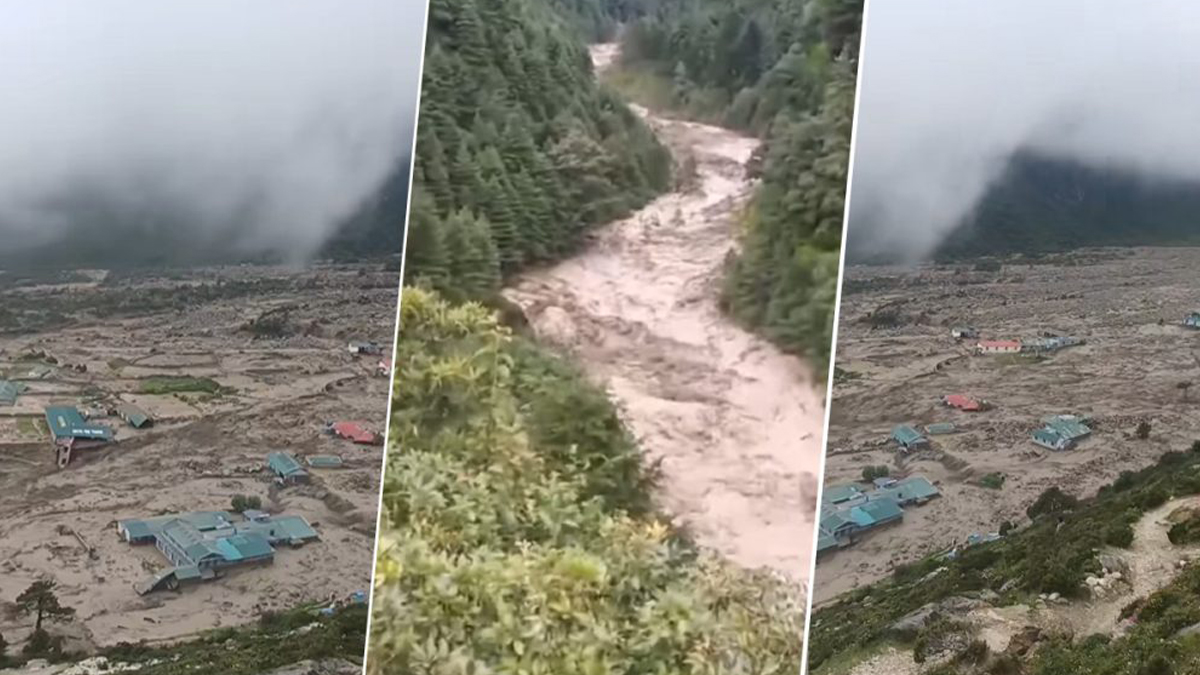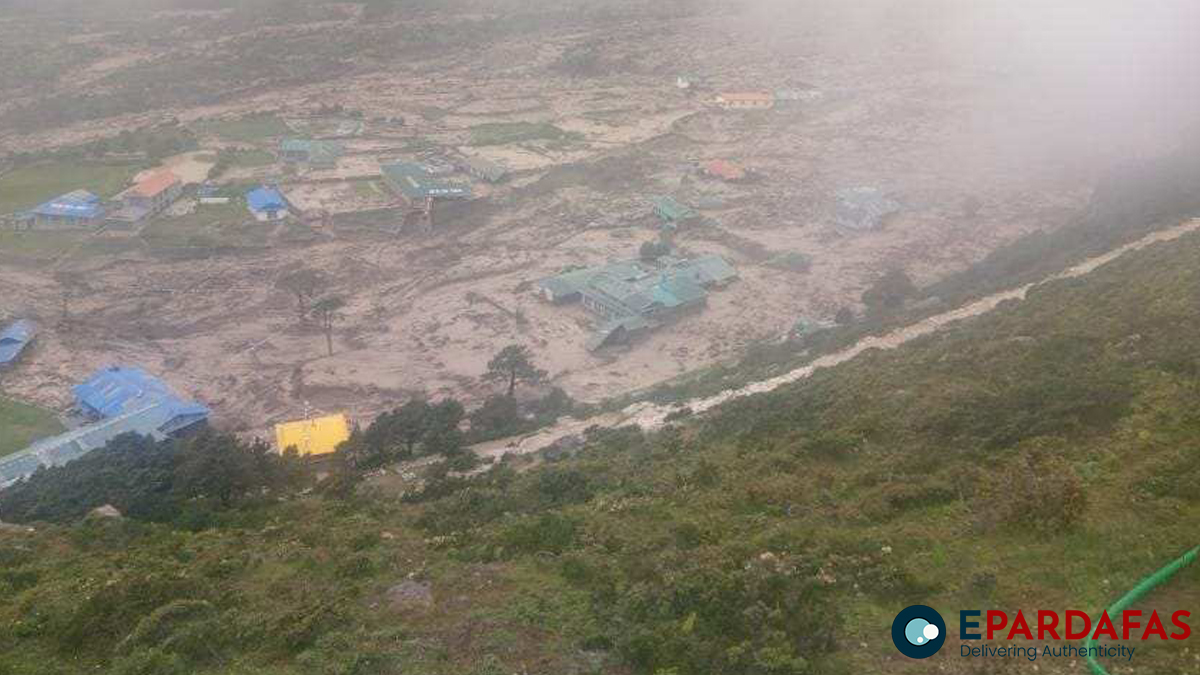
Severe Flood Devastates Thame Region in Khumbu, Nepal, Triggered by Suspected Avalanche and Glacier Lake Burst
A catastrophic flood, suspected to have been triggered by a glacier lake burst or avalanche, has wreaked havoc in the Thame area of Khumbu Pasang Lhamu Rural Municipality-5 in Nepal’s Solukhumbu district. The flood, which struck on Friday, has left the region in a state of devastation, with over 70% of the houses in Thame village reportedly submerged or destroyed.
The disaster is believed to have originated from the Dudhkoshi River, which experienced a sudden and intense surge of water, likely due to the burst of a glacier lake in the Tashi Lapcha region. This area, known for its permafrost formations and high-altitude lakes, has been under scrutiny for its vulnerability to climate-induced disasters.
Local and Official Response
Solukhumbu’s Chief District Officer, Devi Pandey (Khatri), confirmed that both police and army personnel have been deployed to the affected areas in response to the severe flooding. However, due to the remote location and the scale of the disaster, rescue operations are proving to be challenging.
“We are still trying to determine whether an avalanche or another event was the primary cause of this flood,” Pandey stated. “Two hotels have already been swept away by the floodwaters, and we are still awaiting detailed reports on potential human casualties.”
Ngwang Jangmu Sherpa, a ward member of Khumbu Pasang Lhamu Rural Municipality-5, reported extensive damage to the region. “Many houses in Thame have been severely affected, with at least 70 homes completely submerged,” she said. “Approximately 40% of the village has been devastated.”

Geological Perspective
Geologist Shrikamal Dwivedi, who analyzed footage of the flood, observed significant sediment flow, indicating that the rapid melting of ice and snow above the lake may have exacerbated the disaster. “This event is closely linked to global temperature rise,” Dwivedi explained. “The heat accelerates snowmelt, and the increasing temperatures are a key factor in causing such floods.”
Challenges in Rescue Operations
Chief Executive Officer of the rural municipality, Jagat Prasad Bhusal, stated that although no human casualties have been confirmed, some people are reportedly stranded in the river. Efforts to deploy helicopters from Kathmandu for rescue operations have been hampered by adverse weather conditions, further complicating the situation.
“The district administration office has mobilized security personnel to assist in the rescue efforts,” Bhusal said. “But the challenges are immense, given the weather and the terrain.”
Impact on the Region
The Thame area, home to several residential and agricultural structures, as well as tourist accommodations, has been heavily impacted by the flood. The floodwaters have submerged many of these structures, and the damage to the region’s infrastructure is likely to be significant.
This disaster highlights the increasing vulnerability of high-altitude regions like Solukhumbu to climate-induced events, as the rapid melting of glaciers and permafrost continues to pose a severe threat to communities living in these areas. As rescue and recovery operations continue, the full extent of the damage and the long-term impact on the Thame region will become clearer.
- Chinese Public Opinion on Nepal’s Loan Grant Proposal Sparks Debate Amid Corruption Investigation
- Chinese and Bangladeshi Nationals Illegally Acquiring Nepali Citizenship Raises Security Concerns
- US Special Envoy for Youth Affairs Abby Finkenauer Arrives in Nepal to Promote Youth Engagement and Democracy
- Seven Dead, Six Critically Injured in Darchula Jeep Accident













Comments